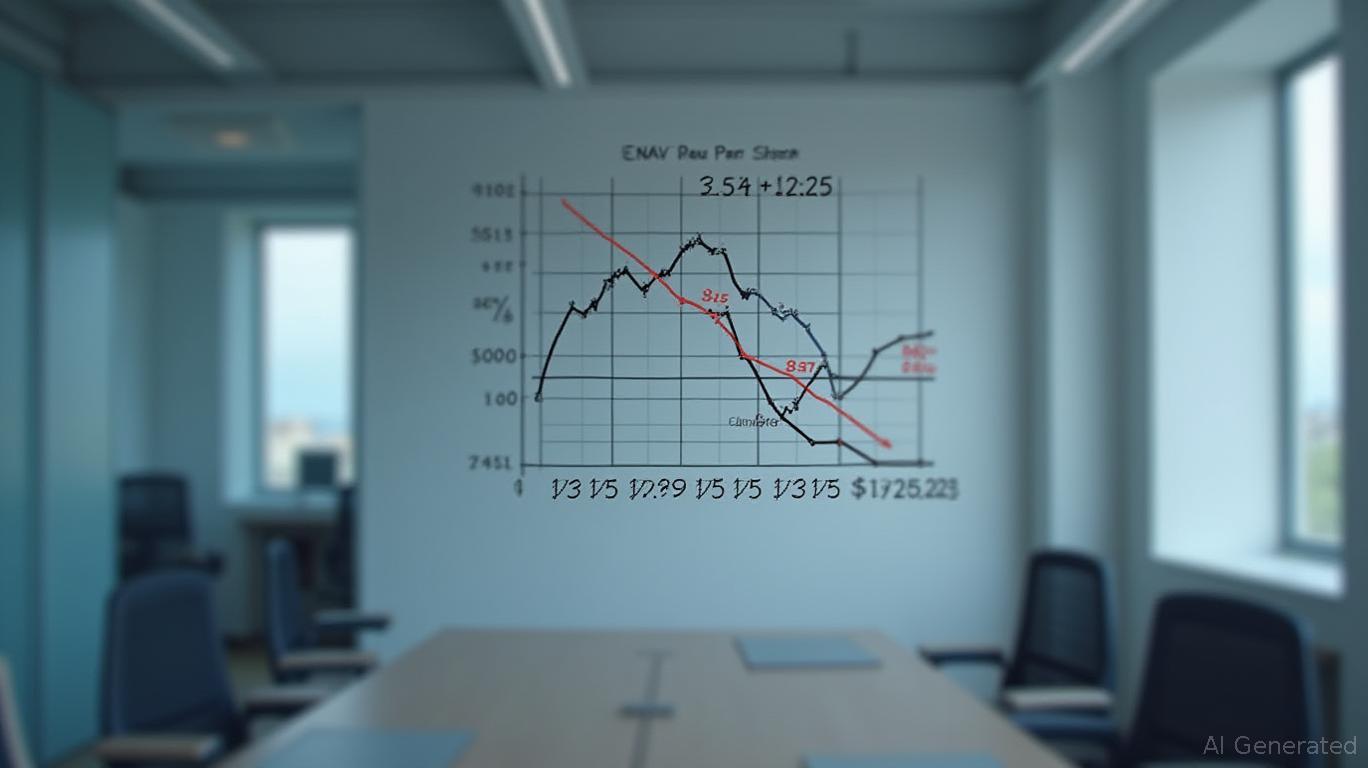Eaton Vance EXG: Navigating Dividend Stability Amid Global Market Volatility
The Eaton Vance Tax-Managed Global Diversified Equity Income Fund (NYSE: EXG) has reaffirmed its commitment to income generation with its latest $0.0657 monthly dividend declaration, maintaining a payout rate first established in April 2024. This decision underscores the fund’s strategy to balance investor returns with portfolio resilience in an uncertain macroeconomic landscape. Below, we dissect EXG’s dividend trajectory, risk factors, and its appeal to income-seeking investors.

Dividend History: A Rollercoaster of Adjustments
EXG’s dividend journey over the past three years reflects the challenges of managing income distributions in a volatile market. In 2023, the fund slashed its annual payout by 17% to $0.6636, marking a sharp reversal from its $0.7996 total in 2022. The decline stemmed from reduced capital gains realizations and heightened geopolitical risks, prompting a steady $0.055 monthly payout.
But 2024 brought a rebound. The fund hiked its monthly dividend to $0.0657 in April—a 18.8% increase—driving the annual payout to $0.7572, a 14.1% rise from 2023. This adjustment aligned with improved global equity performance and the fund’s managed distribution plan, which prioritizes consistent monthly payments over variable quarterly distributions.
In 2025, projections indicate a slight dip to $0.66 annually, reflecting EXG’s conservative approach to sustaining payouts amid uncertain growth. The forward dividend yield of 9.13% (calculated using a share price of $8.08) remains compelling, though investors must scrutinize the fund’s payout structure to gauge sustainability.
The Mechanics of EXG’s Managed Distribution Plan
EXG operates under a managed distribution plan, a strategy common in closed-end funds (CEFs). This model ensures steady monthly dividends by smoothing out income fluctuations, but it carries risks. The fund may supplement dividends with return of capital (ROC) or capital gains, which do not reflect earnings. Historical data shows EXG’s payout ratio—dividends relative to net investment income—has fluctuated, with portions of distributions classified as ROC in recent years.
Investors should monitor the fund’s payout ratio and expense ratio (not disclosed in the data but critical to sustainability). A high payout ratio could strain assets during prolonged downturns, while high expenses erode returns. The fund’s consistency in declaring dividends monthly since at least 2015 suggests operational stability, but past performance does not guarantee future results.
Yield vs. Risk: A Delicate Balance
The 9.13% forward yield makes EXG attractive to income investors, but it comes with trade-offs. High yields often correlate with higher risk, particularly for CEFs, which frequently trade at premiums or discounts to net asset value (NAV). EXG’s premium/discount history is not provided here, but investors should check its current NAV-to-price ratio to avoid overpaying.
Additionally, the fund’s exposure to global equities introduces currency and geopolitical risks. A could illustrate how market swings impact EXG’s ability to sustain payouts.
Conclusion: A Steady Hand in Turbulent Waters
EXG’s $0.0657 dividend represents a midpoint between its post-2023 slump and its 2024 optimism. The fund’s decade-long dividend track record and monthly distribution consistency are positives, but investors must weigh its 9.13% yield against structural risks like ROC dependency and external market pressures.
Key takeaways:
- For income seekers, EXG offers reliable monthly payouts, albeit with a yield that may not fully stem from earnings.
- For risk-averse investors, the fund’s managed plan and historical reliability provide comfort, though NAV trends and expense ratios demand scrutiny.
- For the cautious, the 14.1% dividend growth in 2024 and $0.0657 stability since April 2024 signal a fund recalibrating to balance income and risk.
In a world where global equities remain volatile, EXG’s managed distribution model aims to deliver predictability—but investors must look beyond the headline yield to assess true value.


_442a2dcc1749832873286.jpeg)
_e68fac6d1749831664430.jpeg)






